Short story:
I am using an Atmel AT32UC3C2512C MCU and I selected a 20MHz crystal oscillator for it and two NP0 10pF capacitors. I was in doubt between 10pF, 15pF or 22pF, so I decided to start with the smaller one. Can this burn a MCU?
Long story:
The PCB is really a high density one and I use all of the 64 pins so I can't place the whole schematic and PCB in here. In the first time I turned the circuit on the LED connected to a GPIO turned on (which I think it wasn't supposed to do so, since usually the pins comes as inputs from the factory and the LED needed a HIGH output to turn on) and was very dimm...after some research in the immense datasheet it appears that I placed the LED in a pin that can't handle a LED (Murphy strikes again)...in my defense, the datasheet didn't provide enough information on pins current, the only hint I have for this is the drive strength of the pin and some examples, but no real data is provided.
I removed the LED and after playing a little in Atmel Studio the MCU burned...surprisingly it kept running! So I was able to code more and still with the MCU catching fire several times, it kept running. So after a while it just burned for good (usually reconnecting the power made it stop catching fire and operate as it should, but after a while, just by connecting the battery will make it light up and pop smoke).
So no surprises there, the LED pin couldn't handle too much current so I probably burned the port and the MCU became unstable. So I replaced the MCU for a new one....and in the first programming session it burned too! A brand new one! No LED connected to the wrong pin....all pins set as inputs with pull-ups...the fire (yellow glow light with smoke) started in the vicinity of the MCU's internal regulators pins, which are just on the side of the oscillator pins. I checked all voltages and the rails are clean and stable. I can program the MCU, and run it fine using the internal oscillator, but sometimes, randomly it catches fire, so I am afraid of turning it on every time! It's like "Russian roulette".
So my current guess is that maybe the crystal's capacitors made the MCU unstable, or the small burned pieces of flux from the previous MCU that I couldn't remove are acting as stray components and changing the behaviour of the MCU.
I checked all the pins before turning on for possible shorts with the next pin and all were clean. Have anyone else used this MCU and experienced something like it?
EDIT 1:
It's a wild guess but it could be it so I would like to hear opinions about it: I have some pins connected to N-MOS Transistors pulled down by 10k resistor, so if the MCU came from the factory with all it's pin pulled up as inputs (and the datasheet states that the internal pull-up resistors can range from 2k to 16k) so the pin could be placed at 2.5V and since there is no buskeeper this could have destroied the port.
It's a wild guess because the fire didn't came from this pins but from the internal regulator pins and the Vcc connected to another port (the LED port, which makes sense for the first MCU but not for the second)...comments?

